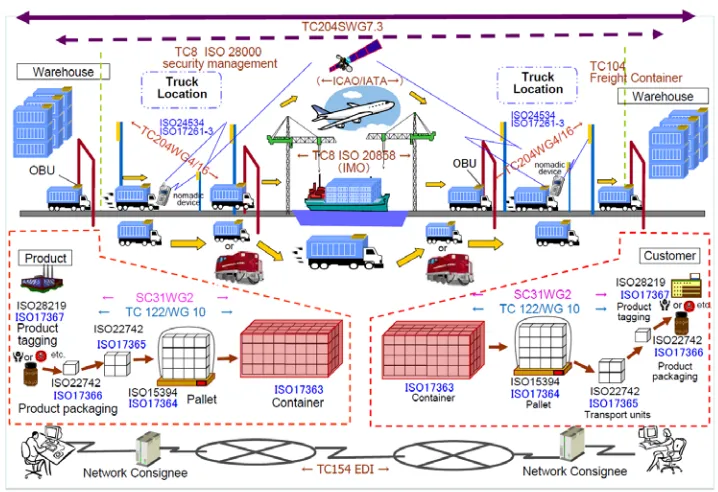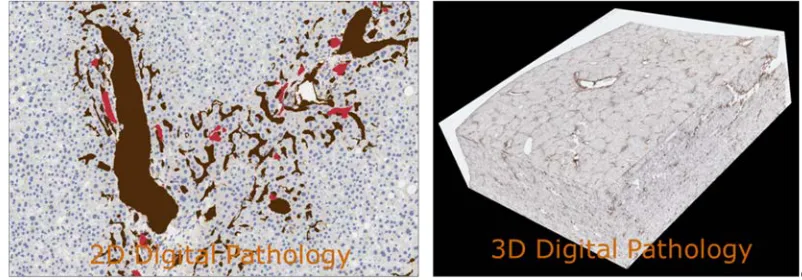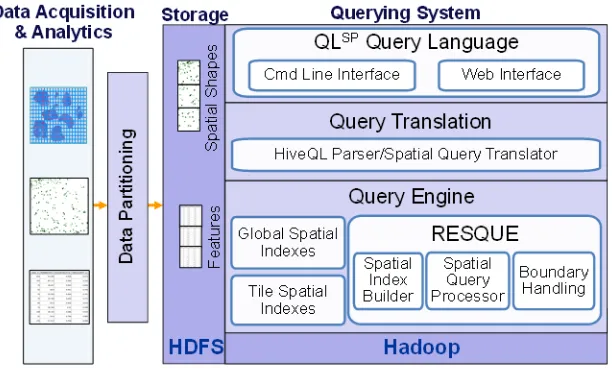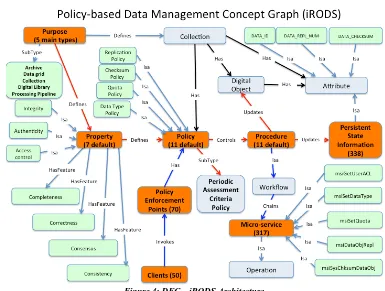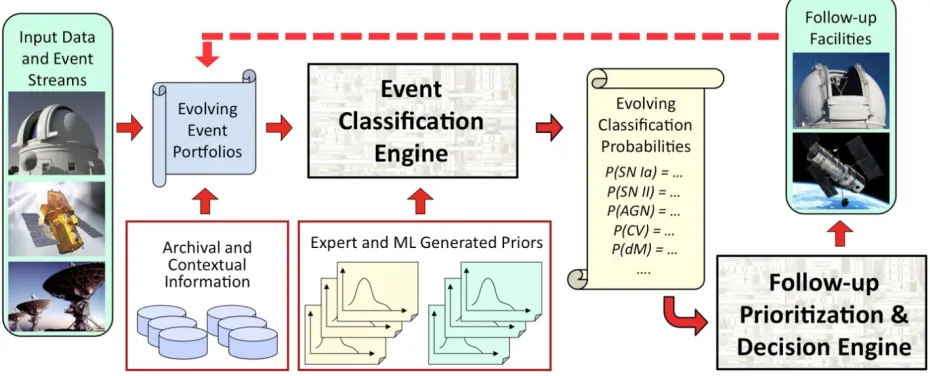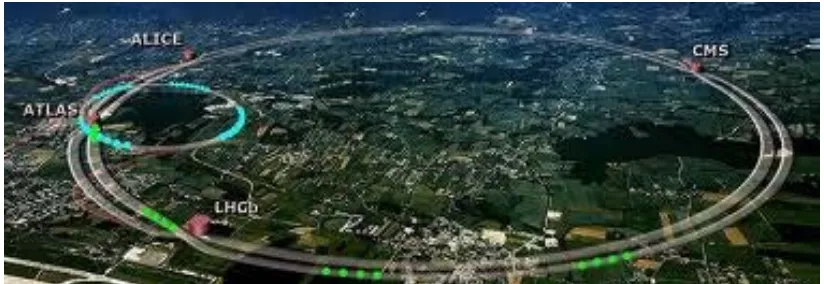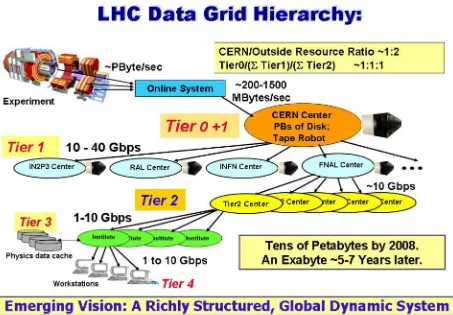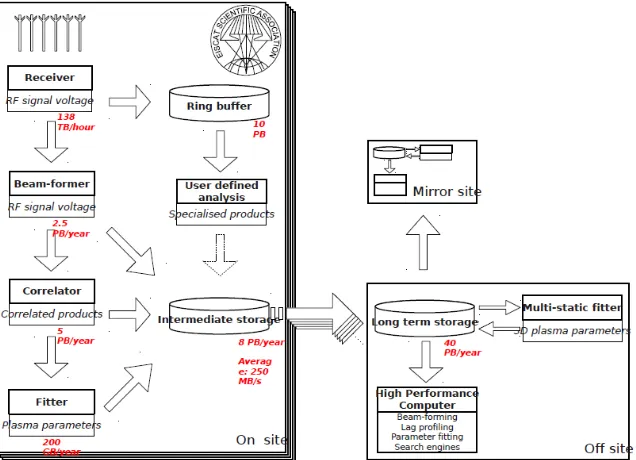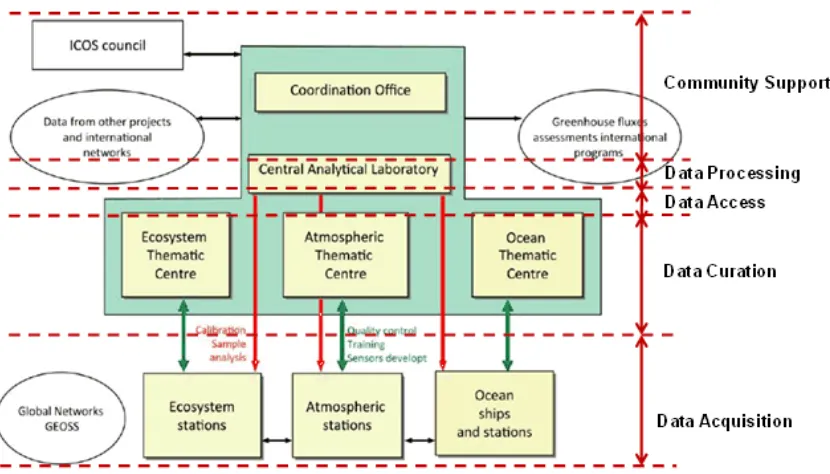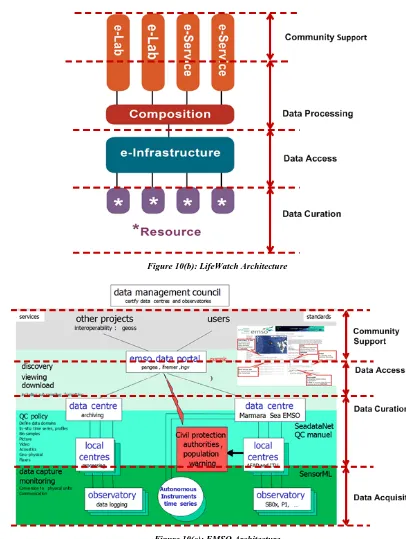NIST Big Data Interoperability
Framework:
Volume 3, Use Cases and General
Requirements
NIST Big Data Public Working Group
Use Cases and Requirements Subgroup
Version 2
June 2018
NIST Big Data Interoperability Framework:
Volume 3, Use Cases and General Requirements
Version 2
NIST Big Data Public Working Group (NBD-PWG)
Use Cases and Requirements Subgroup
Information Technology Laboratory
National Institute of Standards and Technology
Gaithersburg, MD 20899
This publication is available free of charge from:
https://doi.org/10.6028/NIST.SP.1500-3r1
June 2018
National Institute of Standards and Technology (NIST) Special Publication 1500-3r1
Natl. Inst. Stand. Technol. Spec. Publ. 1500-3r1, 334 pages (June 2018) CODEN: NSPUE2
This publication is available free of charge from: https://doi.org/10.6028/NIST.SP.1500-3r1
NIST Special Publication series 1500 is intended to capture external perspectives related to NIST
standards, measurement, and testing-related efforts. These external perspectives can come from
industry, academia, government, and others. These reports are intended to document external
perspectives and do not represent official NIST positions.
Certain commercial entities, equipment, or materials may be identified in this document to
describe an experimental procedure or concept adequately. Such identification is not intended to
imply recommendation or endorsement by NIST, nor is it intended to imply that the entities,
materials, or equipment are necessarily the best available for the purpose.
There may be references in this publication to other publications currently under development by
NIST in accordance with its assigned statutory responsibilities. The information in this
publication, including concepts and methodologies, may be used by federal agencies even before
the completion of such companion publications. Thus, until each publication is completed,
current requirements, guidelines, and procedures, where they exist, remain operative. For
planning and transition purposes, federal agencies may wish to closely follow the development
of these new publications by NIST.
Organizations are encouraged to review all publications during public comment periods and
provide feedback to NIST. All NIST publications are available at
http://www.nist.gov/publication-portal.cfm.
Comments on this publication may be submitted to Wo Chang
National Institute of Standards and Technology
Attn: Wo Chang, Information Technology Laboratory
100 Bureau Drive (Mail Stop 8900) Gaithersburg, MD 20899-8930
Reports on Computer Systems Technology
The Information Technology Laboratory (ITL) at NIST promotes the U.S. economy and public welfare by
providing technical leadership for the Nation’s measurement and standards infrastructure. ITL develops
tests, test methods, reference data, proof of concept implementations, and technical analyses to advance
the development and productive use of information technology. ITL’s responsibilities include the
development of management, administrative, technical, and physical standards and guidelines for the
cost-effective security and privacy of other than national security-related information in federal
information systems. This document reports on ITL’s research, guidance, and outreach efforts in
Information Technology and its collaborative activities with industry, government, and academic
organizations.
Abstract
Big Data is a term used to describe the large amount of data in the networked, digitized, sensor-laden,
information-driven world. While opportunities exist with Big Data, the data can overwhelm traditional
technical approaches and the growth of data is outpacing scientific and technological advances in data
analytics. To advance progress in Big Data, the NIST Big Data Public Working Group (NBD-PWG) is
working to develop consensus on important fundamental concepts related to Big Data. The results are
reported in the
NIST Big Data Interoperability Framework
series of volumes. This volume, Volume 3,
contains the original 51 Version 1 use cases gathered by the NBD-PWG Use Cases and Requirements
Subgroup and the requirements generated from those use cases. The use cases are presented in their
original and summarized form. Requirements, or challenges, were extracted from each use case, and then
summarized over all the use cases. These generalized requirements were used in the development of the
NIST Big Data Reference Architecture (NBDRA), which is presented in Volume 6. Currently, the
subgroup is accepting additional use case submissions using the more detailed Use Case Template 2. The
Use Case Template 2 and the two Version 2 use cases collected to date are presented and summarized in
this volume.
Keywords
Big Data; Big Data Application Provider; Big Data characteristics; Big Data Framework Provider; Big
Data taxonomy; Data Consumer; Data Provider; data science; Management Fabric; reference architecture;
Security and Privacy Fabric; System Orchestrator; use cases.
This
publication
is
available
free
of
charge
from:
Acknowledgements
This document reflects the contributions and discussions by the membership of the NBD-PWG,
co-chaired by Wo Chang (NIST ITL), Bob Marcus (ET-Strategies), and Chaitan Baru (San Diego
Supercomputer Center; National Science Foundation). For all versions, the Subgroups were led by the
following people: Nancy Grady (SAIC), Natasha Balac (San Diego Supercomputer Center), and Eugene
Luster (R2AD) for the Definitions and Taxonomies Subgroup; Geoffrey Fox (Indiana University) and
Tsegereda Beyene (Cisco Systems) for the Use Cases and Requirements Subgroup; Arnab Roy (Fujitsu),
Mark Underwood (Krypton Brothers; Synchrony Financial), and Akhil Manchanda (GE) for the Security
and Privacy Subgroup; David Boyd (InCadence Strategic Solutions), Orit Levin (Microsoft), Don
Krapohl (Augmented Intelligence), and James Ketner (AT&T) for the Reference Architecture Subgroup;
and Russell Reinsch (Center for Government Interoperability), David Boyd (InCadence Strategic
Solutions), Carl Buffington (Vistronix), and Dan McClary (Oracle), for the Standards Roadmap
Subgroup.
The editors for this document were the following:
•
Version 1
: Geoffrey Fox (Indiana University) and Wo Chang (NIST)
•
Version 2
: Geoffrey Fox (Indiana University) and Wo Chang (NIST)
Laurie Aldape (Energetics Incorporated) and Elizabeth Lennon (NIST) provided editorial assistance
across all NBDIF volumes.
NIST SP1500-3, Version 2 has been collaboratively authored by the NBD-PWG. As of the date of this
publication, there are over six hundred NBD-PWG participants from industry, academia, and government.
Federal agency participants include the National Archives and Records Administration (NARA), National
Aeronautics and Space Administration (NASA), National Science Foundation (NSF), and the U.S.
Departments of Agriculture, Commerce, Defense, Energy, Health and Human Services, Homeland
Security, Transportation, Treasury, and Veterans Affairs.
NIST would like to acknowledge the specific contributions
1to this volume, during Version 1 and/or
Version 2 activities, by the following NBD-PWG members:
Tsegereda Beyene
Cisco Systems
Deborah Blackstock
MITRE Corporation
David Boyd
InCadence Strategic Services
Scott Brim
Internet2
Pw Carey
Compliance Partners, LLC
Wo Chang NIST Marge Cole SGT, Inc. Nancy Grady SAIC Jay Greenberg
The Boeing Company
Karen Guertler
Consultant
Keith Hare
JCC Consulting, Inc.
Babak Jahromi Microsoft Pavithra Kenjige PK Technologies Donald Krapohl Augmented Intelligence Ashok Malhotra Oracle Corporation Robert Marcus ET-Strategies Gary Mazzaferro AlloyCloud, Inc. William Miller MaCT USA Sanjay Mishra Verizon Doug Scrimager Slalom Consulting Cherry Tom IEEE-SA
1 “Contributors” are members of the NIST Big Data Public Working Group who dedicated great effort to prepare
and gave substantial time on a regular basis to research and development in support of this document.
Yuri Demchenko
University of Amsterdam
Safia Djennane
Cloud-Age-IT
Geoffrey Fox
Indiana University
Luca Lepori
Data Hold
Orit Levin
Microsoft
Eugene Luster
DISA/R2AD
Wilco van Ginkel
Verizon
Timothy Zimmerlin
Consultant
Alicia Zuniga-Alvarado
Consultant
This
publication
is
available
free
of
charge
from:
T
ABLE OF
C
ONTENTS
EXECUTIVE SUMMARY ... IX
1 INTRODUCTION ... 1
1.1 BACKGROUND ... 1
1.2 SCOPE AND OBJECTIVES OF THE USE CASES AND REQUIREMENTS SUBGROUP ... 3
1.3 REPORT PRODUCTION ... 3
1.4 REPORT STRUCTURE ... 3
1.5 FUTURE WORK ON THIS VOLUME ... 4
2 USE CASE SUMMARIES ... 5
2.1 USE CASE DEVELOPMENT PROCESS ... 5
2.2 GOVERNMENT OPERATION ... 6
2.2.1 Use Case 1: Census 2010 and 2000—Title 13 Big Data ... 6
2.2.2 Use Case 2: NARA Accession, Search, Retrieve, Preservation ... 6
2.2.3 Use Case 3: Statistical Survey Response Improvement ... 6
2.2.4 Use Case 4: Non-Traditional Data in Statistical Survey Response Improvement (Adaptive Design) ... 7
2.3 COMMERCIAL ... 7
2.3.1 Use Case 5: Cloud Eco-System for Financial Industries ... 7
2.3.2 Use Case 6: Mendeley—An International Network of Research ... 8
2.3.3 Use Case 7: Netflix Movie Service ... 8
2.3.4 Use Case 8: Web Search ... 9
2.3.5 Use Case 9: Big Data Business Continuity and Disaster Recovery Within a Cloud Eco-System ... 10
2.3.6 Use Case 10: Cargo Shipping ... 11
2.3.7 Use Case 11: Materials Data for Manufacturing ... 12
2.3.8 Use Case 12: Simulation-Driven Materials Genomics ... 12
2.4 DEFENSE ... 13
2.4.1 Use Case 13: Cloud Large-Scale Geospatial Analysis and Visualization ... 13
2.4.2 Use Case 14: Object Identification and Tracking from Wide-Area Large Format Imagery or Full Motion Video—Persistent Surveillance ... 14
2.4.3 Use Case 15: Intelligence Data Processing and Analysis ... 14
2.5 HEALTH CARE AND LIFE SCIENCES ... 15
2.5.1 Use Case 16: Electronic Medical RECORD DATA ... 15
2.5.2 Use Case 17: Pathology Imaging/Digital Pathology ... 16
2.5.3 Use Case 18: Computational Bioimaging ... 17
2.5.4 Use Case 19: Genomic Measurements ... 18
2.5.5 Use Case 20: Comparative Analysis for Metagenomes and Genomes ... 18
2.5.6 Use Case 21: Individualized Diabetes Management ... 19
2.5.7 Use Case 22: Statistical Relational Artificial Intelligence for Health Care ... 19
2.5.8 Use Case 23: World Population-Scale Epidemiological Study ... 20
2.5.9 Use Case 24: Social Contagion Modeling for Planning, Public Health, and Disaster Management ... 20
2.5.10 Use Case 25: Biodiversity and LifeWatch ... 21
2.6 DEEP LEARNING AND SOCIAL MEDIA ... 21
2.6.1 Use Case 26: Large-Scale Deep Learning ... 21
2.6.2 Use Case 27: Organizing Large-Scale, Unstructured Collections of Consumer Photos ... 22
2.6.3 Use Case 28: Truthy—Information Diffusion Research from Twitter Data ... 23
2.6.4 Use Case 29: Crowd Sourcing in the Humanities as Source for Big and Dynamic Data ... 24
2.6.5 Use Case 30: CINET—Cyberinfrastructure for Network (Graph) Science and Analytics ... 24
This
publication
is
available
free
of
charge
from:
2.6.6 Use Case 31: NIST Information Access Division—Analytic Technology Performance Measurements,
Evaluations, and Standards... 25
2.7 THE ECOSYSTEM FOR RESEARCH ... 25
2.7.1 Use Case 32: DataNet Federation Consortium... 25
2.7.2 Use Case 33: The Discinnet Process ... 26
2.7.3 Use Case 34: Semantic Graph Search on Scientific Chemical and Text-Based Data ... 27
2.7.4 Use Case 35: Light Source Beamlines ... 28
2.8 ASTRONOMY AND PHYSICS ... 28
2.8.1 Use Case 36: Catalina Real-Time Transient Survey: A Digital, Panoramic, Synoptic Sky Survey ... 28
2.8.2 Use Case 37: DOE Extreme Data from Cosmological Sky Survey and Simulations ... 30
2.8.3 Use Case 38: Large Survey Data for Cosmology... 30
2.8.4 Use Case 39: Particle Physics—Analysis of Large Hadron Collider Data: Discovery of Higgs Particle ... 31
2.8.5 Use Case 40: Belle II High Energy Physics Experiment ... 33
2.9 EARTH,ENVIRONMENTAL, AND POLAR SCIENCE ... 33
2.9.1 Use Case 41: European Incoherent Scatter Scientific Association 3D Incoherent Scatter Radar System 33 2.9.2 Use Case 42: Common Operations of Environmental Research Infrastructure ... 34
2.9.3 Use Case 43: Radar Data Analysis for the Center for Remote Sensing of Ice Sheets ... 39
2.9.4 Use Case 44: Unmanned Air Vehicle Synthetic Aperture Radar (UAVSAR) Data Processing, Data Product Delivery, and Data Services ... 41
2.9.5 Use Case 45: NASA Langley Research Center/ Goddard Space Flight Center iRODS Federation Test Bed 42 2.9.6 Use Case 46: MERRA Analytic Services (MERRA/AS) ... 42
2.9.7 Use Case 47: Atmospheric Turbulence – Event Discovery and Predictive Analytics ... 43
2.9.8 Use Case 48: Climate Studies Using the Community Earth System Model at the U.S. Department of Energy (DOE) NERSC Center ... 44
2.9.9 Use Case 49: DOE Biological and Environmental Research (BER) Subsurface Biogeochemistry Scientific Focus Area ... 45
2.9.10 Use Case 50: DOE BER AmeriFlux and FLUXNET Networks ... 46
2.9.11 Use Case 2-1: NASA Earth Observing System Data and Information System (EOSDIS) ... 46
2.9.12 Use Case 2-2: Web-Enabled Landsat Data (WELD) Processing ... 47
2.10 ENERGY ... 49
2.10.1 Use Case 51: Consumption Forecasting in Smart Grids ... 49
3 USE CASE REQUIREMENTS ... 50
3.1 USE CASE SPECIFIC REQUIREMENTS ... 50
3.2 GENERAL REQUIREMENTS ... 50
4 ADDITIONAL USE CASE CONTRIBUTIONS ... 53 APPENDIX A: USE CASE STUDY SOURCE MATERIALS ...A-1 APPENDIX B: SUMMARY OF KEY PROPERTIES ... B-1 APPENDIX C: USE CASE REQUIREMENTS SUMMARY ... C-1 APPENDIX D: USE CASE DETAIL REQUIREMENTS ... D-1 APPENDIX E: USE CASE TEMPLATE 2 ... E-1 APPENDIX F: VERSION 2 RAW USE CASE DATA ... F-1 APPENDIX G: ACRONYMS ... G-1 APPENDIX H: REFERENCES ... H-1
This
publication
is
available
free
of
charge
from:
Figures
FIGURE 1:CARGO SHIPPING SCENARIO ... 11
FIGURE 2:PATHOLOGY IMAGING/DIGITAL PATHOLOGY—EXAMPLES OF 2-D AND 3-DPATHOLOGY IMAGES ... 16
FIGURE 3:PATHOLOGY IMAGING/DIGITAL PATHOLOGY ... 17
FIGURE 4:DFC—IRODSARCHITECTURE ... 26
FIGURE 5:CATALINA CRTS:ADIGITAL,PANORAMIC,SYNOPTIC SKY SURVEY ... 29
FIGURE 6:PARTICLE PHYSICS:ANALYSIS OF LHCDATA:DISCOVERY OF HIGGS PARTICLE—CERNLHCLOCATION ... 31
FIGURE 7:PARTICLE PHYSICS:ANALYSIS OF LHCDATA:DISCOVERY OF HIGGS PARTICLE—THE MULTI-TIER LHCCOMPUTING INFRASTRUCTURE ... 32
FIGURE 8:EISCAT3DINCOHERENT SCATTER RADAR SYSTEM –SYSTEM ARCHITECTURE ... 34
FIGURE 9:ENVRICOMMON ARCHITECTURE ... 36
FIGURE 10(A):ICOSARCHITECTURE ... 36
FIGURE 10(B):LIFEWATCH ARCHITECTURE ... 37
FIGURE 10(C):EMSOARCHITECTURE ... 37
FIGURE 10(D):EURO-ARGO ARCHITECTURE ... 38
FIGURE 10(E):EISCAT3DARCHITECTURE ... 38
FIGURE 11:TYPICAL CRESISRADAR DATA AFTER ANALYSIS ... 39
FIGURE 12:RADAR DATA ANALYSIS FOR CRESISREMOTE SENSING OF ICE SHEETS–TYPICAL FLIGHT PATHS OF DATA GATHERING IN SURVEY REGION ... 40
FIGURE 13:TYPICAL ECHOGRAM WITH DETECTED BOUNDARIES... 40
FIGURE 14:COMBINED UNWRAPPED COSEISMIC INTERFEROGRAMS ... 41
FIGURE 15:TYPICAL MERRA/ASOUTPUT ... 43
FIGURE 16:TYPICAL NASAIMAGE OF TURBULENT WAVES ... 44
FIGURE 17:NASANEXWELD/GIBSPROCESSING WORKFLOW ... 48
Tables
TABLE B-1:USE CASE SPECIFIC INFORMATION BY KEY PROPERTIES ... B-1
TABLE C-1:USE CASE SPECIFIC REQUIREMENTS ... C-1
TABLE D-1:DATA SOURCES REQUIREMENTS ... D-1
TABLE D-2:DATA TRANSFORMATION ... D-6
TABLE D-3:CAPABILITIES ... D-10
TABLE D-4:DATA CONSUMER ... D-16
TABLE D-5:SECURITY AND PRIVACY ... D-18
TABLE D-6:LIFE CYCLE MANAGEMENT ... D-21
TABLE D-7:OTHERS... D-24
This
publication
is
available
free
of
charge
from:
EXECUTIVE SUMMARY
The
NIST Big Data Interoperability Framework
consists of nine volumes, each of which addresses a
specific key topic, resulting from the work of the NBD-PWG. The nine volumes are:
•
Volume 1, Definitions [1]
•
Volume 2, Taxonomies [2]
•
Volume 3, Use Cases and General Requirements (this volume)
•
Volume 4, Security and Privacy [3]
•
Volume 5, Architectures White Paper Survey [4]
•
Volume 6, Reference Architecture [5]
•
Volume 7, Standards Roadmap [6]
•
Volume 8: Reference Architecture Implementation [7]
•
Volume 9: Adoption and Modernization [8]
The
NIST Big Data Interoperability Framework
will be released in three versions, which correspond to
the three development stages of the NBD-PWG work. The three stages aim to achieve the following with
respect to the NIST Big Data Reference Architecture (NBDRA).
Stage 1:
Identify the high-level Big Data reference architecture key components, which are
technology-, infrastructure-, and vendor-agnostic;
Stage 2:
Define general interfaces between the NBDRA components; and
Stage 3:
Validate the NBDRA by building Big Data general applications through the general
interfaces.
The
NIST Big Data Interoperability Framework: Volume 3, Use Cases and General Requirements
document was prepared by the NIST Big Data Public Working Group (NBD-PWG) Use Cases and
Requirements Subgroup to document the collection of use cases and extraction of requirements. The
Subgroup developed the first use case template with 26 fields that were completed by 51 users in the
following broad areas:
•
Government Operations (4)
•
Commercial (8)
•
Defense (3)
•
Healthcare and Life Sciences (10)
•
Deep Learning and Social Media (6)
•
The Ecosystem for Research (4)
•
Astronomy and Physics (5)
•
Earth, Environmental and Polar Science (10)
•
Energy (1)
The use cases are, of course, only representative, and do not encompass the entire spectrum of Big Data
usage. All the use cases were openly submitted and no significant editing was performed. While there are
differences between the use cases in scope and interpretation, the benefits of free and open submission
outweighed those of greater uniformity. The Use Cases and Requirements Subgroup examined the use
cases, extracted specific and general requirements, and provided input to the other subgroups to inform
their work as documented in the other NBDIF Volumes.
During the development of version 2 of the NBDIF, the Use Cases and Requirements Subgroup and the
This
publication
is
available
free
of
charge
from:
of the NBD-PWG. These two subgroups collaboratively created the Use Case Template 2, which is
currently being used to collect additional use cases. The first two Version 2 use cases are presented in this
document and belong to the “Earth, Environmental and Polar Science” application domain. To submit a
use case, please fill out the PDF form
(
https://bigdatawg.nist.gov/_uploadfiles/M0621_v2_7345181325.pdf
) and email it to Wo Chang
(wchang@nist.gov). Use cases will be evaluated as they are submitted and will be accepted until the end
of Phase 3 work.
This volume documents the process used by the Subgroup to collect the 51 use cases and extract
requirements to form the NIST Big Data Reference Architecture (NBDRA). Included in this document
are summaries of the 51 Version 1 use cases, extracted requirements, the original, unedited 51 Version 1
use cases, the questions contained in Use Case Template 2 and the two Version 2 use cases submitted to
date. Potential areas of future work for the Subgroup during stage 3 are highlighted in Section 1.5 of this
volume. The current effort documented in this volume reflects concepts developed within the rapidly
evolving field of Big Data.
This
publication
is
available
free
of
charge
from:
1
INTRODUCTION
1.1 BACKGROUND
There is broad agreement among commercial, academic, and government leaders about the remarkable
potential of Big Data to spark innovation, fuel commerce, and drive progress. Big Data is the common
term used to describe the deluge of data in today’s networked, digitized, sensor-laden, and
information-driven world. The availability of vast data resources carries the potential to answer questions previously
out of reach, including the following:
•
How can a potential pandemic reliably be detected early enough to intervene?
•
Can new materials with advanced properties be predicted before these materials have ever been
synthesized?
•
How can the current advantage of the attacker over the defender in guarding against
cyber-security threats be reversed?
There is also broad agreement on the ability of Big Data to overwhelm traditional approaches. The growth
rates for data volumes, speeds, and complexity are outpacing scientific and technological advances in data
analytics, management, transport, and data user spheres.
Despite widespread agreement on the inherent opportunities and current limitations of Big Data, a lack of
consensus on some important fundamental questions continues to confuse potential users and stymie
progress. These questions include the following:
•
How is Big Data defined?
•
What attributes define Big Data solutions?
•
What is new in Big Data?
•
What is the difference between Big Data and
bigger data
that has been collected for years?
•
How is Big Data different from traditional data environments and related applications?
•
What are the essential characteristics of Big Data environments?
•
How do these environments integrate with currently deployed architectures?
•
What are the central scientific, technological, and standardization challenges that need to be
addressed to accelerate the deployment of robust, secure Big Data solutions?
Within this context, on March 29, 2012, the White House announced the Big Data Research and
Development Initiative. [9] The initiative’s goals include helping to accelerate the pace of discovery in
science and engineering, strengthening national security, and transforming teaching and learning by
improving analysts’ ability to extract knowledge and insights from large and complex collections of
digital data.
Six federal departments and their agencies announced more than $200 million in commitments spread
across more than 80 projects, which aim to significantly improve the tools and techniques needed to
access, organize, and draw conclusions from huge volumes of digital data. The initiative also challenged
industry, research universities, and nonprofits to join with the federal government to make the most of the
opportunities created by Big Data.
Motivated by the White House initiative and public suggestions, the National Institute of Standards and
Technology (NIST) has accepted the challenge to stimulate collaboration among industry professionals to
further the secure and effective adoption of Big Data. As one result of NIST’s Cloud and Big Data Forum
This
publication
is
available
free
of
charge
from:
for the development of a Big Data Standards Roadmap. Forum participants noted that this roadmap
should define and prioritize Big Data requirements, including interoperability, portability, reusability,
extensibility, data usage, analytics, and technology infrastructure. In doing so, the roadmap would
accelerate the adoption of the most secure and effective Big Data techniques and technology.
On June 19, 2013, the NIST Big Data Public Working Group (NBD-PWG) was launched with extensive
participation by industry, academia, and government from across the nation. The scope of the NBD-PWG
involves forming a community of interests from all sectors—including industry, academia, and
government—with the goal of developing consensus on definitions, taxonomies, secure reference
architectures, security and privacy, and, from these, a standards roadmap. Such a consensus would create
a vendor-neutral, technology- and infrastructure-independent framework that would enable Big Data
stakeholders to identify and use the best analytics tools for their processing and visualization requirements
on the most suitable computing platform and cluster, while also allowing added value from Big Data
service providers.
The
NIST Big Data Interoperability Framework
(NBDIF) will be released in three versions, which
correspond to the three stages of the NBD-PWG work. The three stages aim to achieve the following with
respect to the NIST Big Data Reference Architecture (NBDRA).
Stage 1:
Identify the high-level Big Data reference architecture key components, which are
technology, infrastructure, and vendor agnostic;
Stage 2:
Define general interfaces between the NBDRA components; and
Stage 3:
Validate the NBDRA by building Big Data general applications through the general
interfaces.
On September 16, 2015, seven NBDIF
Version 1 volumes were published
(
http://bigdatawg.nist.gov/V1_output_docs.php
), each of which addresses a specific key topic, resulting
from the work of the NBD-PWG. The seven volumes are as follows:
•
Volume 1, Definitions [1]
•
Volume 2, Taxonomies [2]
•
Volume 3, Use Cases and General Requirements (this volume)
•
Volume 4, Security and Privacy [3]
•
Volume 5, Architectures White Paper Survey [4]
•
Volume 6, Reference Architecture [5]
•
Volume 7, Standards Roadmap [6]
Currently, the NBD-PWG is working on Stage 2 with the goals to enhance the Version 1 content, define
general interfaces between the NBDRA components by aggregating low-level interactions into high-level
general interfaces, and demonstrate how the NBDRA can be used. As a result of the Stage 2 work, the
following two additional NBDIF volumes have been developed.
•
Volume 8, Reference Architecture Interfaces [7]
•
Volume 9, Adoption and Modernization [8]
Version 2 of the NBDIF volumes, resulting from Stage 2 work, can be downloaded from the NBD-PWG
website (
https://bigdatawg.nist.gov/V2_output_docs.php
). Potential areas of future work for each volume
during Stage 3 are highlighted in Section 1.5 of each volume. The current effort documented in this
volume reflects concepts developed within the rapidly evolving field of Big Data.
This
publication
is
available
free
of
charge
from:
1.2 SCOPE AND OBJECTIVES OF THE USE CASES AND
REQUIREMENTS SUBGROUP
This volume was prepared by the NBD-PWG Use Cases and Requirements Subgroup. The effort focused
on forming a community of interest from industry, academia, and government, with the goal of
developing a consensus list of Big Data requirements across all stakeholders. This included gathering and
understanding various use cases from nine diversified areas (i.e., application domains.) To achieve this
goal, the Subgroup completed the following tasks:
•
Gathered input from all stakeholders regarding Big Data requirements;
•
Analyzed and prioritized a list of challenging use case specific requirements that may delay or
prevent adoption of Big Data deployment;
•
Developed a comprehensive list of generalized Big Data requirements;
•
Collaborated with the NBD-PWG Reference Architecture Subgroup to provide input for the
NBDRA;
•
Collaborated with the NBD-PWG Security and Privacy Subgroup to produce the Use Case
Template 2, which will help gather valuable input to strengthen future work of the NBD-PWG;
and
•
Documented the findings in this report.
1.3 REPORT PRODUCTION
Version 1 of this report was produced using an open collaborative process involving weekly telephone
conversations and information exchange using the NIST document system. The 51 Version 1 use cases,
included herein, came from Subgroup members participating in the calls and from other interested parties
informed of the opportunity to contribute.
The outputs from the use case process are presented in this report and online at the following locations:
•
Index to all use cases:
https://bigdatawg.nist.gov/usecases.php
•
List of specific requirements versus use case:
https://bigdatawg.nist.gov/uc_reqs_summary.php
•
List of general requirements versus architecture component:
https://bigdatawg.nist.gov/uc_reqs_gen.php
•
List of general requirements versus architecture component with record of use cases giving
requirements:
https://bigdatawg.nist.gov/uc_reqs_gen_ref.php
•
List of architecture components and specific requirements plus use case constraining the
components:
https://bigdatawg.nist.gov/uc_reqs_gen_detail.php
•
General requirements:
https://bigdatawg.nist.gov/uc_reqs_gen.php
.
During development of version 2 of this report, the subgroup focused on preparing the revised Use Case
Template 2 (an outline of which is provided in Appendix E) and collaborating with other subgroups on
content development for the other NBDIF volumes.
To achieve technical and high-quality document content, this document will go through a public
comments period along with NIST internal review.
1.4 REPORT STRUCTURE
Following this introductory section, the remainder of this document is organized as follows:
•
Section 2 presents the original (version 1) 51 use cases and 2 new use cases gotten with updated
This
publication
is
available
free
of
charge
from:
o
Section 2.1 discusses the process that led to their production. of the use cases.
o
Sections 2.2 through 2.10 provide summaries of the 53 use cases; each summary has
three subsections: Application, Current Approach, and Future. The use cases are
organized into the nine broad areas (application domains) listed below, with the number
of associated use cases in parentheses:
Government Operation (4)
Commercial (8)
Defense (3)
Healthcare and Life Sciences (10)
Deep Learning and Social Media (6)
The Ecosystem for Research (4)
Astronomy and Physics (5)
Earth, Environmental, and Polar Science (10) plus 2 additional version 2 use
cases (12 total)
Energy (1)
•
Section 3 presents a more detailed analysis of requirements across use cases.
•
Section 4 introduces the version 2 use cases.
•
Appendix A contains the original, unedited use cases.
•
Appendix B summarizes key properties of each use case.
•
Appendix C presents a summary of use case requirements.
•
Appendix D provides the requirements extracted from each use case and aggregated general
requirements grouped by characterization category.
•
Appendix E presents the structure of the revised Use Case Template 2. The fillable pdf can be
downloaded from
https://bigdatawg.nist.gov/_uploadfiles/M0621_v2_7345181325.pdf
.
•
Appendix F contains the Version 2 use cases.
•
Appendix G contains acronyms and abbreviations used in this document.
•
Appendix H supplies the document references.
1.5 FUTURE WORK ON THIS VOLUME
The revised Use Case Template 2, developed during phase 2, contains enhanced, comprehensive coverage
of various topics, which aim to increase the depth of insight gained from submitted use cases. Use cases
will be accepted by the NBD-PWG on a continuous basis until the end of Phase 3. To submit a use case,
please fill out the PDF form (
https://bigdatawg.nist.gov/_uploadfiles/M0621_v2_7345181325.pdf
) and
email it to Wo Chang (wchang@nist.gov). The NBD-PWG will evaluate additional use cases as they are
submitted, to extract information that will strengthen and shape the content of version 3 of NBDIF
documents.
This
publication
is
available
free
of
charge
from:
2
USE CASE SUMMARIES
2.1 USE CASE DEVELOPMENT PROCESS
A
use case
is a typical application stated at a high level for the purposes of extracting requirements or
comparing usages across fields. In order to develop a consensus list of Big Data requirements across all
stakeholders, the Subgroup began by collecting use cases. Publicly available information was collected
for various Big Data architecture examples with special attention given to some areas including
Healthcare and Government. After collection of 51 use cases, nine broad areas (i.e., application domains)
were identified by the Subgroup members to better organize the collection of use cases. The list of
application domains reflects the use cases submitted and is not intended to be exhaustive. If other
application domains are proposed, they will be considered. Each example of Big Data architecture
constituted one use case. The nine application domains were as follows:
•
Government Operation;
•
Commercial;
•
Defense;
•
Healthcare and Life Sciences;
•
Deep Learning and Social Media;
•
The Ecosystem for Research;
•
Astronomy and Physics;
•
Earth, Environmental, and Polar Science; and
•
Energy.
As noted above, participants in the NBD-PWG Use Cases and Requirements Subgroup and other
interested parties supplied the information for the use cases. The template used to collect use case
information and provided at the front of Appendix A, was valuable for gathering consistent information
that enabled the Subgroup to develop supporting analysis and comparison of the use cases. However,
varied levels of detail and quantitative or qualitative information were received for each use case template
section. The original, unedited use cases are also included in Appendix A and may be downloaded from
the NIST document library (
http://bigdatawg.nist.gov/usecases.php
).
Beginning with Section 2.2 below, the following information is presented for each Big Data use case:
•
Application: a high-level description of the use case;
•
Current approach: the current manifestation of the use case; and
•
Future: desired computational environment, if submitted.
For some application domains, several similar Big Data use cases are presented, providing a more
complete view of Big Data requirements within that application domain.
The use cases are presented in this section with the information originally submitted. The original content
has not been modified. Specific vendor solutions and technologies are mentioned in the use cases.
However, the listing of these solutions and technologies does not constitute endorsement from the
NBD-PWG. The front matter (page ii) contains a general disclaimer. The use cases are numbered sequentially
to facilitate cross-referencing between the use case summaries presented in this section, the original use
cases (Appendix A), and the use case summary tables (Appendices B, C, and D).
This
publication
is
available
free
of
charge
from:
2.2 GOVERNMENT OPERATION
2.2.1 U
SE
C
ASE
1:
C
ENSUS
2010
AND
2000
—
T
ITLE
13
B
IG
D
ATA
Submitted by Vivek Navale and Quyen Nguyen, National Archives and Records Administration (NARA)
A
PPLICATIONCensus 2010 and 2000—Title 13 data must be preserved for several decades so they can be accessed and
analyzed after 75 years. Data must be maintained ‘as-is’ with no access and no data analytics for 75 years,
preserved at the bit level, and curated, which may include format transformation. Access and analytics
must be provided after 75 years. Title 13 of the U.S. Code authorizes the U.S. Census Bureau to collect
and preserve census related data and guarantees that individual and industry-specific data are protected.
C
URRENTA
PPROACHThe dataset contains 380 terabytes (TB) of scanned documents.
F
UTUREFuture data scenarios and applications were not expressed for this use case.
2.2.2 U
SE
C
ASE
2:
NARA
A
CCESSION
,
S
EARCH
,
R
ETRIEVE
,
P
RESERVATION
Submitted by Vivek Navale and Quyen Nguyen, NARA
A
PPLICATIONThis area comprises accession, search, retrieval, and long-term preservation of government data.
C
URRENTA
PPROACHThe data are currently handled as follows:
1.
Get physical and legal custody of the data
2.
Pre-process data for conducting virus scans, identifying file format identifications, and removing
empty files
3.
Index the data
4.
Categorize records (e.g., sensitive, non-sensitive, privacy data)
5.
Transform old file formats to modern formats (e.g., WordPerfect to PDF)
6.
Conduct e-discovery
7.
Search and retrieve to respond to special requests
8.
Search and retrieve public records by public users
Currently hundreds of TBs are stored centrally in commercial databases supported by custom software
and commercial search products.
F
UTUREFederal agencies possess many distributed data sources, which currently must be transferred to centralized
storage. In the future, those data sources may reside in multiple cloud environments. In this case, physical
custody should avoid transferring Big Data from cloud to cloud or from cloud to data center.
2.2.3 U
SE
C
ASE
3:
S
TATISTICAL
S
URVEY
R
ESPONSE
I
MPROVEMENT
Submitted by Cavan Capps, U.S. Census Bureau
This
publication
is
available
free
of
charge
from:
A
PPLICATIONSurvey costs are increasing as survey responses decline. The goal of this work is to increase the quality—
and reduce the cost—of field surveys by using advanced ‘recommendation system techniques.’ These
techniques are open and scientifically objective, using data mashed up from several sources and also
historical survey para-data (i.e., administrative data about the survey.)
C
URRENTA
PPROACHThis use case handles about a petabyte (PB) of data coming from surveys and other government
administrative sources. Data can be streamed. During the decennial census, approximately 150 million
records transmitted as field data are streamed continuously. All data must be both confidential and secure.
All processes must be auditable for security and confidentiality as required by various legal statutes. Data
quality should be high and statistically checked for accuracy and reliability throughout the collection
process. Software used includes Hadoop, Spark, Hive, R, SAS, Mahout, Allegrograph, MySQL, Oracle,
Storm, BigMemory, Cassandra, and Pig.
F
UTUREImproved recommendation systems are needed similar to those used in e-commerce (e.g., similar to the
Netflix use case) that reduce costs and improve quality, while providing confidentiality safeguards that
are reliable and publicly auditable. Data visualization is useful for data review, operational activity, and
general analysis. The system continues to evolve and incorporate important features such as mobile
access.
2.2.4 U
SE
C
ASE
4:
N
ON
-T
RADITIONAL
D
ATA IN
S
TATISTICAL
S
URVEY
R
ESPONSE
I
MPROVEMENT
(A
DAPTIVE
D
ESIGN
)
Submitted by Cavan Capps, U.S. Census Bureau
A
PPLICATIONSurvey costs are increasing as survey response declines. This use case has goals similar to those of the
Statistical Survey Response Improvement use case. However, this case involves non-traditional
commercial and public data sources from the web, wireless communication, and electronic transactions
mashed up analytically with traditional surveys. The purpose of the mashup is to improve statistics for
small area geographies and new measures, as well as the timeliness of released statistics.
C
URRENTA
PPROACHData from a range of sources are integrated including survey data, other government administrative data,
web scrapped data, wireless data, e-transaction data, possibly social media data, and positioning data from
various sources. Software, visualization, and data characteristics are similar to those in the Statistical
Survey Response Improvement use case.
F
UTUREAnalytics need to be developed that give more detailed statistical estimations, on a more near real-time
basis, for less cost. The reliability of estimated statistics from such mashed-up sources still must be
evaluated.
2.3 COMMERCIAL
2.3.1 U
SE
C
ASE
5:
C
LOUD
E
CO
-S
YSTEM FOR
F
INANCIAL
I
NDUSTRIES
Submitted by Pw Carey, Compliance Partners, LLC
This
publication
is
available
free
of
charge
from:
A
PPLICATIONUse of cloud (e.g., Big Data) technologies needs to be extended in financial industries (i.e., banking,
securities and investments, insurance) transacting business within the U.S.
C
URRENTA
PPROACHThe financial industry is already using Big Data and Hadoop for fraud detection, risk analysis,
assessments, as well as improving their knowledge and understanding of customers. At the same time, the
industry is still using traditional client/server/data warehouse/relational database management system
(RDBMS) for the handling, processing, storage, and archival of financial data. Real-time data and
analysis are important in these applications.
F
UTURESecurity, privacy, and regulation must be addressed. For example, the financial industry must examine
SEC-mandated use of XBRL (extensible business-related markup language) and use of other cloud
functions.
2.3.2 U
SE
C
ASE
6:
M
ENDELEY
—
A
N
I
NTERNATIONAL
N
ETWORK OF
R
ESEARCH
Submitted by William Gunn, Mendeley
A
PPLICATIONMendeley has built a database of research documents and facilitates the creation of shared bibliographies.
Mendeley collects and uses the information about research reading patterns and other activities conducted
via their software to build more efficient literature discovery and analysis tools. Text mining and
classification systems enable automatic recommendation of relevant research, improving research teams’
performance and cost-efficiency, particularly those engaged in curation of literature on a particular
subject.
C
URRENTA
PPROACHData size is presently 15 TB and growing at a rate of about 1 TB per month. Processing takes place on
Amazon Web Services (AWS) using the following software: Hadoop, Scribe, Hive, Mahout, and Python.
The database uses standard libraries for machine learning and analytics, latent Dirichlet allocation (LDA,
a generative probabilistic model for discrete data collection), and custom-built reporting tools for
aggregating readership and social activities for each document.
F
UTURECurrently Hadoop batch jobs are scheduled daily, but work has begun on real-time recommendation. The
database contains approximately 400 million documents and roughly 80 million unique documents, and
receives 500,000 to 700,000 new uploads on a weekday. Thus, a major challenge is clustering matching
documents together in a computationally efficient way (i.e., scalable and parallelized) when they are
uploaded from different sources and have been slightly modified via third-party annotation tools or
publisher watermarks and cover pages.
R
ESOURCES•
Mendeley.
http://mendeley.com
. Accessed March 3, 2015.
•
Mendeley.
http://dev.mendeley.com
. Accessed March 3, 2015.
2.3.3 U
SE
C
ASE
7:
N
ETFLIX
M
OVIE
S
ERVICE
Submitted by Geoffrey Fox, Indiana University
This
publication
is
available
free
of
charge
from:
A
PPLICATIONNetflix allows streaming of user-selected movies to satisfy multiple objectives (for different
stakeholders)—but with a focus on retaining subscribers. The company needs to find the best possible
ordering of a set of videos for a user (e.g., household) within a given context in real time, with the
objective of maximizing movie consumption. Recommendation systems and streaming video delivery are
core Netflix technologies. Recommendation systems are always personalized and use logistic/linear
regression, elastic nets, matrix factorization, clustering, LDA, association rules, gradient-boosted decision
trees, and other tools. Digital movies are stored in the cloud with metadata, along with individual user
profiles and rankings for small fraction of movies. The current system uses multiple criteria: a
content-based recommendation system, a user-content-based recommendation system, and diversity. Algorithms are
continuously refined with A/B testing (i.e., two-variable randomized experiments used in online
marketing).
C
URRENTA
PPROACHNetflix held a competition for the best collaborative filtering algorithm to predict user ratings for films—
the purpose of which was to improve ratings by 10%. The winning system combined over 100 different
algorithms. Netflix systems use SQL, NoSQL, and Map/Reduce on AWS. Netflix recommendation
systems have features in common with e-commerce systems such as Amazon.com. Streaming video has
features in common with other content-providing services such as iTunes, Google Play, Pandora, and
Last.fm. Business initiatives such as Netflix-sponsored content have been used to increase viewership.
F
UTUREStreaming video is a very competitive business. Netflix needs to be aware of other companies and trends
in both content (e.g., which movies are popular) and Big Data technology.
R
ESOURCES•
Building Large-scale Real-world Recommender Systems - Recsys2012 tutorial.
http://www.slideshare.net/xamat/building-largescale-realworld-recommender-systems-recsys2012-tutorial.
Accessed March 3, 2015.
•
RAD – Outlier Detection on Big Data.
http://techblog.netflix.com/.
Accessed March 3, 2015.
2.3.4 U
SE
C
ASE
8:
W
EB
S
EARCH
Submitted by Geoffrey Fox, Indiana University
A
PPLICATIONA web search function returns results in
≈
0.1 seconds based on search terms with an average of three
words. It is important to maximize quantities such as “precision@10” for the number of highly
accurate/appropriate responses in the top 10 ranked results.
C
URRENTA
PPROACHThe current approach uses the following steps:
1.
Crawl the web
2.
Pre-process data to identify what is searchable (words, positions)
3.
Form an inverted index, which maps words to their locations in documents
4.
Rank the relevance of documents using the PageRank algorithm
5.
Employ advertising technology, e.g., using reverse engineering to identify ranking models—or
preventing reverse engineering
6.
Cluster documents into topics (as in Google News)
This
publication
is
available
free
of
charge
from:
Modern clouds and technologies such as Map/Reduce have been heavily influenced by this application,
which now comprises ~45 billion web pages total.
F
UTUREWeb search is a very competitive field, so continuous innovation is needed. Two important innovation
areas are addressing the growing segment of mobile clients, and increasing sophistication of responses
and layout to maximize the total benefit of clients, advertisers, and the search company. The “deep web”
(content not indexed by standard search engines, buried behind user interfaces to databases, etc.) and
multimedia searches are also of increasing importance. Each day, 500 million photos are uploaded, and
each minute, 100 hours of video are uploaded to YouTube.
R
ESOURCES•
Internet Trends D11 Conference.
http://www.slideshare.net/kleinerperkins/kpcb-Internet-trends-2013
.
Accessed March 3, 2015.
•
Introduction to Search Engine Technology.
http://webcourse.cs.technion.ac.il/236621/Winter2011-2012/en/ho_Lectures.html
. Accessed
March 3, 2015.
•
Lecture “Information Retrieval and Web Search Engines” (SS 2011).
http://www.ifis.cs.tu-bs.de/teaching/ss-11/irws
. Accessed March 3, 2015.
•
Recommender Systems Tutorial (Part 1) –Introduction.
http://www.slideshare.net/beechung/recommender-systems-tutorialpart1intro
. Accessed March 3,
2015.
•
The size of the World Wide Web (The Internet).
http://www.worldwidewebsize.com/.
Accessed
March 3, 2015.
2.3.5 U
SE
C
ASE
9:
B
IG
D
ATA
B
USINESS
C
ONTINUITY AND
D
ISASTER
R
ECOVERY
W
ITHIN A
C
LOUD
E
CO
-S
YSTEM
Submitted by Pw Carey, Compliance Partners, LLC
A
PPLICATIONBusiness Continuity and Disaster Recovery (BC/DR) needs to consider the role that four overlaying and
interdependent forces will play in ensuring a workable solution to an entity's business continuity plan and
requisite disaster recovery strategy. The four areas are people (i.e., resources), processes (e.g.,
time/cost/return on investment [ROI]), technology (e.g., various operating systems, platforms, and
footprints), and governance (e.g., subject to various and multiple regulatory agencies).
C
URRENTA
PPROACHData replication services are provided through cloud ecosystems, incorporating IaaS and supported by
Tier 3 data centers. Replication is different from backup and only moves the changes that took place since
the previous replication, including block-level changes. The replication can be done quickly—with a
five-second window—while the data are replicated every four hours. This data snapshot is retained for seven
business days, or longer if necessary. Replicated data can be moved to a failover center (i.e., a backup
system) to satisfy an organization’s recovery point objectives (RPO) and recovery time objectives (RTO).
There are some relevant technologies from VMware, NetApps, Oracle, IBM, and Brocade. Data sizes
range from terabytes to petabytes.
F
UTUREMigrating from a primary site to either a replication site or a backup site is not yet fully automated. The
goal is to enable the user to automatically initiate the failover sequence. Both organizations must know
which servers have to be restored and what the dependencies and inter-dependencies are between the
This
publication
is
available
free
of
charge
from:
primary site servers and replication and/or backup site servers. This knowledge requires continuous
monitoring of both.
R
ESOURCES•
Disaster Recovery.
http://www.disasterrecovery.org/.
Accessed March 3, 2015.
2.3.6 U
SE
C
ASE
10:
C
ARGO
S
HIPPING
Submitted by William Miller, MaCT USA
A
PPLICATIONDelivery companies such as Federal Express, United Parcel Service (UPS), and DHL need optimal means
of monitoring and tracking cargo.
C
URRENTA
PPROACHInformation is updated only when items are checked with a bar code scanner, which sends data to the
central server. An item’s location is not currently displayed in real time. Figure 1 provides an architectural
diagram.
F
UTURE [image:22.612.125.484.412.658.2]Tracking items in real time is feasible through the Internet of Things application, in which objects are
given unique identifiers and capability to transfer data automatically, i.e., without human interaction. A
new aspect will be the item’s status condition, including sensor information, global positioning system
(GPS) coordinates, and a unique identification schema based upon standards under development
(specifically International Organization for Standardization [ISO] standard 29161) from the ISO Joint
Technical Committee 1, Subcommittee 31, Working Group 2, which develops technical standards for data
structures used for automatic identification applications.
Figure 1: Cargo Shipping Scenario
